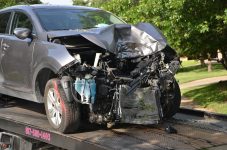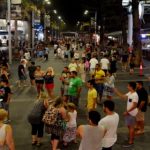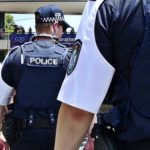Police Blasted over Skye’s Law Tragedy

The issue of how NSW police handle pursuits is back in the spotlight after the Deputy State Coroner strongly criticised the driving of two officers involved in the chase that ended in the death of 19-month-old Sydney toddler Skye Sassine.
Six years after Skye’s death, Deputy State Coroner Paul MacMahon handed down his written findings on May 15. He criticised the officers over their manner of driving, making several recommendations about further training and a more rigorous review process in the wake of fatal pursuits.
Skye was killed when William Ngati, who was fleeing police after carrying out two armed robberies, slammed into the back of her parents’ car during the high-speed chase in Sydney on New Year’s Eve, 2009.
Skye’s death led to tougher penalties for those who lead police on chases, but the coroner’s findings raise concerns that the issue of police putting lives at risk by engaging in pursuits is yet to be adequately addressed.
Skye’s Law
Section 51B of the Crimes Act (NSW), commonly termed “Skye’s Law”, makes it a criminal offence for the driver of a vehicle to fail to stop when they are aware, or should be aware, that they are being pursued by police. The maximum penalty is three years’ imprisonment for first offenders, as well as an automatic licence disqualification period of three years. The disqualification can be reduced to a minimum of 12 months if there are good reasons to do so.
The aim of the tougher penalties was to deter people from engaging in police pursuits. However, the coroner’s findings suggest that the conduct of police officers should also be looked at, some of whom have been shown to act dangerously, and contrary to police training and protocols.
Officers’ driving criticised
Mr MacMahon reportedly found that “there was no evidence to suggest that the action of the police officers directly caused the collision that resulted in Skye’s death” yet he remained critical of the driving of Senior Constable Troy Skinner and Senior Constable Andrew McNeice.
The coroner found the driving by Senior Constable Skinner showed “utter disregard” for the safe driving policy imposed on NSW Police officers in pursuits. He also commented on Senior Constable Skinner’s apparent adrenaline rush during the 21-kilometre chase, and his erratic actions of weaving in and out of traffic “rather than travelling in the right lane and waiting for the vehicle in front of him to move left to allow him to pass.”
According to the findings, Senior Constable Skinner “thought he was on a racetrack” and had travelled at above 100km/h through at least 14 red traffic lights.
Further erratic driving included travelling on the wrong side of the road at speeds in excess of 155km/h, and doing a handbrake turn in front of a car waiting to turn right. It was reported that he even yelled obscenities at other drivers and blasted the horn at cars at an intersection. The coroner noted that these were not methods taught or promoted in the safe driving policy.
Mr MacMahon was also critical of the other officer involved in the pursuit, Senior Constable Andrew McNeice. Although the camera in McNiece’s car was not recording, it was inferred that his driving was similar to Senior Constable Skinner’s, as both officers had left their RBT station at the same time and were close together at the scene of the accident. Mr McMahon found that:
“The right of a police officer to disregard the road rules is one that is given in limited circumstances and only to be used in the public interest and never for personal excitement. It is hard not to come to the conclusion that in this case the latter was the motive for the actions displayed by both officers.”
Light consequences for the officers
The two officers were reviewed by the Safe Driving Panel and decertified from driving for a short time, but were soon allowed back behind the wheel under supervision. This decision was found by the coroner to be “perplexing,” and inconsistent with the stated commitment of police to ensuring that the safe driving policy is adhered to.
The coroner’s recommendations
Mr MacMahon made a number of recommendations to the Commissioner of Police, including that the Safe Driving Panel review the driving of all officers involved in fatal pursuits, assess whether the safe driving policy was followed, and produce a written statement outlining their conclusions and any recommendations.
He also recommended that the role of PolAir in pursuits be clarified, and that further training be given to all officers likely to be involved in pursuits.
Although the coroner found no blame towards the officers involved in the Skye Sassine tragedy, he was highly critical of their actions, and it can be certainly be said that their driving posed a significant danger to the general public.
It remains to be seen whether the recommendations for more training and greater review of pursuits will be implemented in full, and whether they will help to prevent adrenaline-fuelled behaviour during pursuits in the future.
Going to court for a traffic offence?
If you are going to court for a traffic offence, call or email Sydney Criminal Lawyers anytime to arrange a free first consultation with an experienced, specialist traffic lawyer who will accurately advise you of your options, the best way forward, and fight for the optimal outcome in your specific situation.






